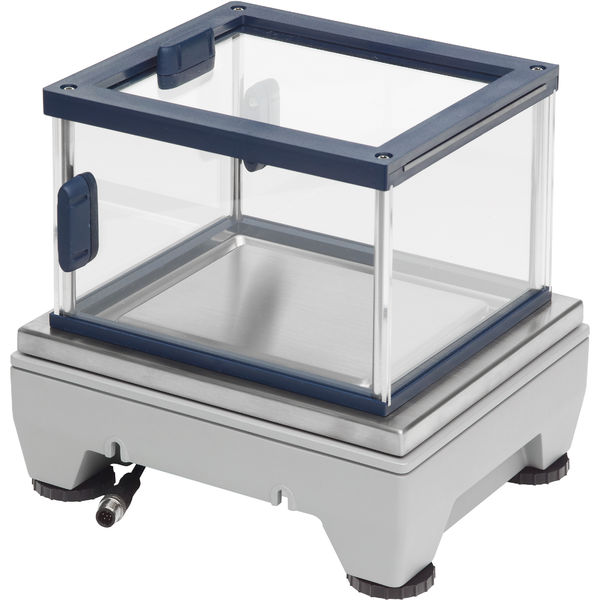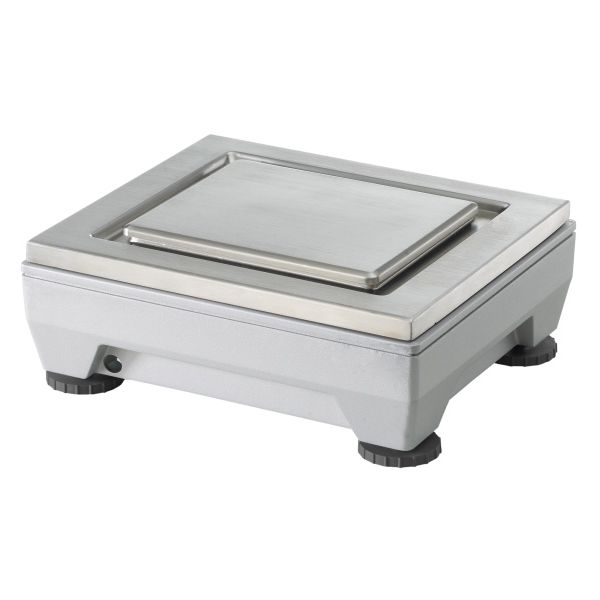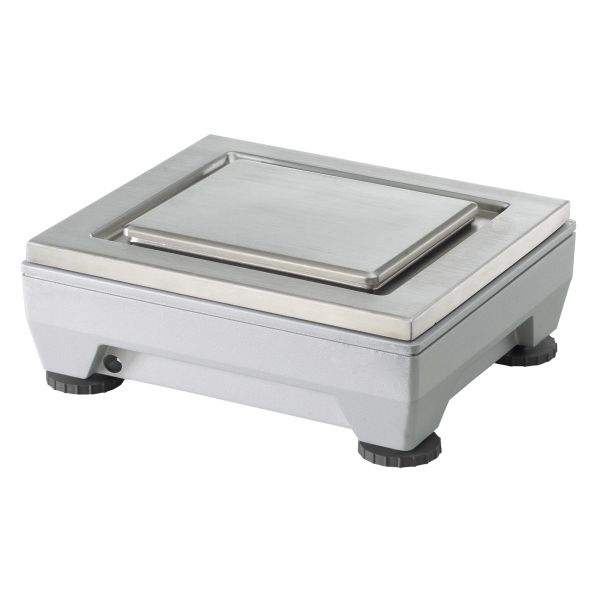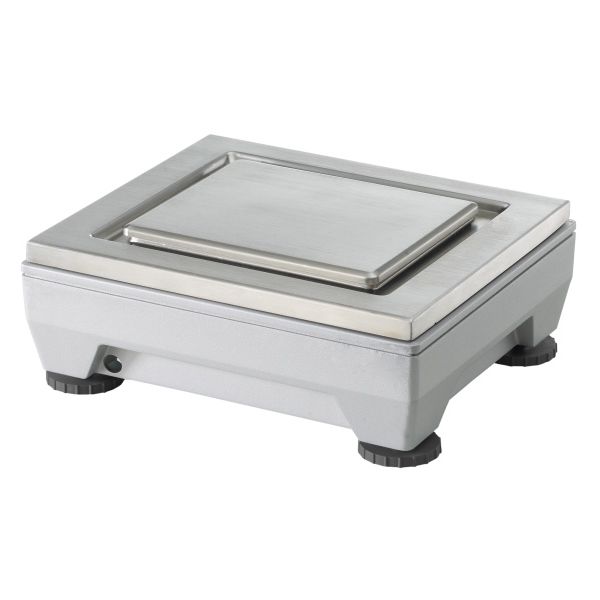Moisture Analyzers
With Halogen Heating Technology for Fast, Precise and Reliable Results
Advantages of METTLER TOLEDO's Moisture Analyzers

Fast Return on Investment
Fast and reliable moisture results help you increase productivity, optimize processes and save money.

Accurate Results for All Sample Types
Get highly reliable and repeatable moisture results thanks to fast halogen heating and superior weighing performance.
High Performance Moisture Analyzers
High Performance Moisture Analyzers
The HX204 and HS153 moisture analyzers deliver highly accurate and repeatable results for any sample type, and can fulfill all compliance requirements.
Robust, All-Purpose Moisture Analyzer
Robust, All-Purpose Moisture Analyzer
Touchscreen operation and user guidance make it simple to determine the moisture content in a wide range of samples. The compact design and robust construction make the HC103 ideal for use in both the lab and at production.

Intuitive and User-Friendly Operation
Users can start their drying methods directly from a shortcut on the home screen. Onscreen user guidance simplifies operation and minimizes errors even for untrained operators.

Suitable for Lab and Production
Tough housing and robust components ensure a long instrument lifetime even in harsh conditions.

Versatile Data Management
Data transfer is available via USB, Ethernet, Wifi and RS232. With EasyDirect Moisture PC software, you can save all data in a SQL database and visualize results. Or, simply print your results on a network or strip printer.

Quick and Easy Cleaning
Thanks to flat stainless steel surfaces, you can clean the instrument quickly and easily.
SmartCal - Moisture Balance Test Substance
Fast Instrument Performance Check
Be compliant and ensure ongoing instrument performance with SmartCal™, a simple 10-minute test verifies overall moisture analyzer performance.
Useful Related Links
Accessories and Software for Moisture Analyzers
Ensure accurate moisture analyses with accessories for correct sample preparation and handling. Benefit from data management software, and printers for easy documentation of your moisture results. Read more
SmartCal™ Test Substance for Moisture Analyzers
Discover SmartCal, the unique test substance that enables you to verify the performance of your moisture analyzer in a simple 10-minute test. Test at point of use to ensure trusted moisture determination results. Read more
Good Moisture Analysis Practice
The Good Moisture Analysis Practice Recommendation helps you find the right moisture analysis equipment based on your process requirements. Read more
Moisture Analyzers: Know-How and Expertise
Learn more about moisture analyzers and moisture analysis in different industries. Get valuable information on drying method development and correct routine testing to ensure accurate and reliable moisture content results. Read more
Best Practice for Reliable Moisture Analysis
Ensure you get the right moisture analysis solution. Our white paper presents a scientific risk-based approach to instrument selection and ensuring accuracy. Read more
Moisture Application Library
Take advantage of the 100+ drying methods developed by our moisture application specialists. Ready-to-use, and fully tested and validated against the drying oven method. Read more
Do You Want Your Moisture Analyzer to Perform at Its Best? Get It Serviced by the Market Leader

Do You Want Your Moisture Analyzer to Perform at Its Best? Get It Serviced by the Market Leader
FAQs
What is a moisture analyzer?
A moisture analyzer determines the moisture content of a sample with the loss on drying method and consists of a weighing and heating unit (infrared). It is often also called moisture balance or moisture meter.
Watch the video to learn more:
How does a moisture analyzer work?
A moisture analyzer works according to the thermo-gravimetric principle, also often referred to as the 'Loss on Drying' (LOD) principle. The moisture analyzer consists of two components, a balance unit and a heating unit. In order to measure the moisture content the sample's start weight is recorded. Afterwards, a halogen lamp or other infrared radiator heats and dries the sample while the integrated balance continually records the sample weight. When the sample no longer loses weight the instrument shuts off and the moisture content is calculated. The total loss in weight is used to calculate the moisture content.
Our moisture analyzers meet the moisture determination needs of quality control, production and in-process control, offering:
• Accurate and reliable results, through precise temperature control with halogen heating and outstanding weighing technology
• Intuitive operation, with step-by-step user guidance to avoid errors in routine operation
• Consistent measurement performance, thanks to the instrument`s robust design and built-in tests, which are supported by our global service network.
What is the best moisture analyzer for my application?

Finding the right moisture analyzer for your application is not always easy. The best moisture analyzer is the one that fits to your specific requirements. Typically, requirements not only concern measurement performance but also other factors such as ease-of-use, data management capabilities, robustness (long instrument lifetime) and compliance features. METTLER TOLEDO offers a wide range of reliable instruments that cover basic, all-round and high-performance requirements.
What is the heating system of a moisture analyzer?
The heating source (halogen lamp, metal rod, ceramic, quartz lamp) and its regulation are defined as a heating system. All mentioned heating sources are infrared radiators. This means the sample is heated by absorption of infrared radiation.
What are the advantages of halogen heating?
The most important performance factor is precise and fast temperature regulation, which is best delivered by halogen lamps because of their low mass and therefore fast reaction time. This ensures repeatable results starting from the first measurement (some other heating sources either deliver different results in the first measurement or require a warm up measurement, which wastes time and resources). Furthermore, an even heat distribution on the sample surface is essential for repeatable and reliable results. We advise you to ask us or another manufacturer for a demonstration in order to experience the performance in real-life.
What is the best moisture analyzer for laboratory or production workers?
Typically, laboratory and production workers require an instrument that is intuitive to use and guides the operators through each process. This ensures that users are following the right procedures thus preventing handling errors. Graphical user guidance, method shortcuts, user management and the ability to select a specific language are helpful instrument functionalities. Watch the video below to learn more about Simple Operation:
Which moisture analyzer is recommended for best repeatability?
We recommend the HX204 moisture analyzer. It contains a high-performance weighing cell with 0.001% moisture content readability separated from the heating source to ensure the best moisture results, even when measuring a substance with very low moisture content.
- Learn more about HX204
How does the moisture analyzer support me in being compliant to regulations such as USP, FDA, ASTM or 21 CFR Part 11?
Two topics are important with regards to compliance: data management and performance testing. Ensuring data integrity means that every result record needs to be attributable (who has done the measurement), legible (traceable, readable), contemporaneous (recorded at time of generation), original and accurate (correct, complete). Please keep in mind that an instrument is never compliant by itself but it can support the user in being compliant. The HX204 is the moisture analyzer for industries with the highest demands for compliance. It supports the user with safety and data integrity functions such as user management (prevents unwanted changes being made by offering unique user log-ins), tailor-made reporting (including non-modifiable PDF reports) and integrated performance testing of all relevant measuring systems (heating unit, balance, overall instrument test) at the point of use.
- Learn more about HX204
Can I automate the moisture analysis process or control my moisture analyzer remotely?
It is possible to control all METTLER TOLEDO moisture analyzers remotely, thanks to the comprehensive MT-SICS command set, which is provided as a standard. However, only the HX204 is suitable for automation due to its automatic lid. This allows you to fully automate moisture measurements, including the selection and initiation of different drying methods.
I'm looking to replace my old moisture analyzer – which model should I choose?
Replacing your existing moisture analyzer is an important decision. If you have an old model of moisture analyzer model that we no longer manufacture, then to ensure at least the equivalent performance, we recommend that you consider one of the following moisture analyzers as a replacement to ensure optimal performance:
HR83, HR73 → HX204
HG63, HG53 → HS153
HB43-S, HB43, LP16 → HC103
What are the typical parameters of a moisture analyzer?
When using a moisture analyzer, it is crucial to maintain consistency in several parameters to ensure accurate and repeatable results that can be integrated into a moisture analyzer method. One of the key aspects is the sample weight. Selecting a specific weight for each sample is essential, as using the same amount each time helps achieve reliable comparisons and prevents variations in measurement that could affect the moisture content results.
Not sure which sample weight is the right one? Ask for a free-of-charge GMAP Recommendation.
Additionally, the drying temperature must be carefully set and standardized for all analyses. The temperature can significantly influence the rate at which moisture evaporates; if this parameter varies, it may lead to inconsistent results across different determinations. The drying mode is another important factor to consider. Many moisture analyzers offer different modes, such as standard for solid or rapid drying for liquid samples, which can impact the efficiency of moisture removal. Choosing a specific drying mode and using it consistently enhances the reliability of moisture content readings. Finally, the switch-off criterion should be consistently applied. This criterion defines when the drying process should end, often based on a specific weight loss over time. Using the same switch-off criterion ensures that all samples are analyzed under the same conditions, further enhancing the accuracy and comparability of the moisture content results. All METTLER TOLEDO moisture analyzers offer automatic switch-off criteria. By focusing on these parameters—sample weight, drying temperature, drying mode, and switch-off criterion—you can achieve precise and consistent moisture measurements across different samples. With the Excellence moisture analyzer, even more method parameters for specific samples, such as volatiles or very low moisture contents, can be applied.
You can find more information in our Guide to Moisture Analysis.
How can a moisture analyzer support in method development?
The Method Wizard is a feature of HC103, HS153, and HX204 that offers assistance in developing a suitable moisture method for specific samples. Based on the characteristics of your sample as well as a test of the drying temperature and switch-off criterion, the Method Wizard can formulate a suitable method for your sample. The Method Wizard guides you through the development of your moisture method in three simple steps:
- Questionnaire: proposal of method parameters based on sample characteristics.
- Temperature assistant: determination of drying temperature.
- Test measurement: verification of temperature and selection of appropriate switch-off criterion.
After each step of the Method Wizard, you can decide whether to accept the current method settings or to complete another step of the wizard. For steps 2 and 3, a reference moisture content value is needed.
Watch the video for more details:
Can I measure solid and liquid samples with a moisture analyzer?
All METTLER TOLEDO Moisture Analyzers measure a minimum recommended moisture range of 1%MC, with the HS153 capable of measuring down to 0.5%MC, and the HX204 reaching as low as 0.01%MC. In addition to measuring low moisture content in solid samples, these analyzers can also assess liquid samples. Special drying modes, such as “Rapid,” enhance the drying process. The use of consumables like glass fiber filters not only increases the surface area for a more homogeneous sample distribution but also prevents film buildup and reduces measurement time. Thus, the moisture analyzer is versatile enough for liquid, slurry, paste-like, and solid samples. Users can also select the desired result unit, such as moisture content (%MC) or dry content (%DC).
Can I use a moisture analyzer for determining the moisture content of volatile substances?
Moisture analyzers are effective tools for measuring moisture content in various substances; however, special care must be taken when dealing with volatile compounds. Depending on their characteristics (e.g., flammable), a risk analysis should be conducted to evaluate if the moisture analyzer is the right choice. These volatile substances can evaporate during the drying process, depending on the selected parameters. The specific drying program “Gentle” is designed for the drying of substances that tend to form a skin, such as those containing sugar, or for substances with highly volatile components. This program features a continuous temperature increase that reaches the selected drying temperature only after a predetermined ramp time. The ramp time is the interval between the start of drying and the achievement of the final temperature, which can be set in advance. For samples that contain readily evaporating substances, it is advisable to use the manual starting mode. Unlike the automatic operating mode, where the start weight is determined with a closed lid, the manual mode allows the sample chamber to remain open and detect the start weight immediately. This ensures that the initial weight is recorded without any loss, preventing inaccuracies before the measurement begins.












